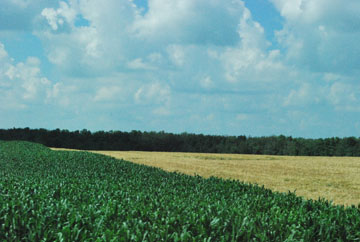 (NC)—If you’ve ever met a wheat farmer, you’ve probably also met a soybean and a corn farmer. Farmers in Ontario utilize an important management tool called crop rotation. Farmers will rotate which crops are planted in which fields to ensure that the soil gets the right nutrients and to help manage pests.
(NC)—If you’ve ever met a wheat farmer, you’ve probably also met a soybean and a corn farmer. Farmers in Ontario utilize an important management tool called crop rotation. Farmers will rotate which crops are planted in which fields to ensure that the soil gets the right nutrients and to help manage pests.
A common crop rotation in Ontario is a three-year rotation of corn-soybeans-wheat. All three crops give and take different nutrients from the soil. For instance, soybean plants add nitrogen to the soil – an essential nutrient for plants to grow – while wheat and corn plants take nitrogen. By rotating the crops through the same field, farmers help keep the soil healthy so it continues to produce for future generations.
Rotating the crops also helps reduce the instance of diseases and pests. Certain bugs favour one crop over another; if the same crop was planted in the same field year after year, the number of bugs in the field would grow and the damage to the crop would be severe. By rotating, farmers are ensuring they aren’t feeding the same problem-causing bugs year after year.
As wheat harvest is now complete you may see farmers begin preparing the fields for the next crop. Some fields will be ploughed to prepare for corn or soybean fields in the spring while other fields will be left untouched to protect the soil from erosion through the winter.
www.newscanada.com
Latest posts by Canadian Home Trends (see all)
- Dining Room Design Tips - July 13, 2025
- Practical Luxury in Forest Grove - July 13, 2025
- The Hidden Value of Great Design - July 13, 2025






